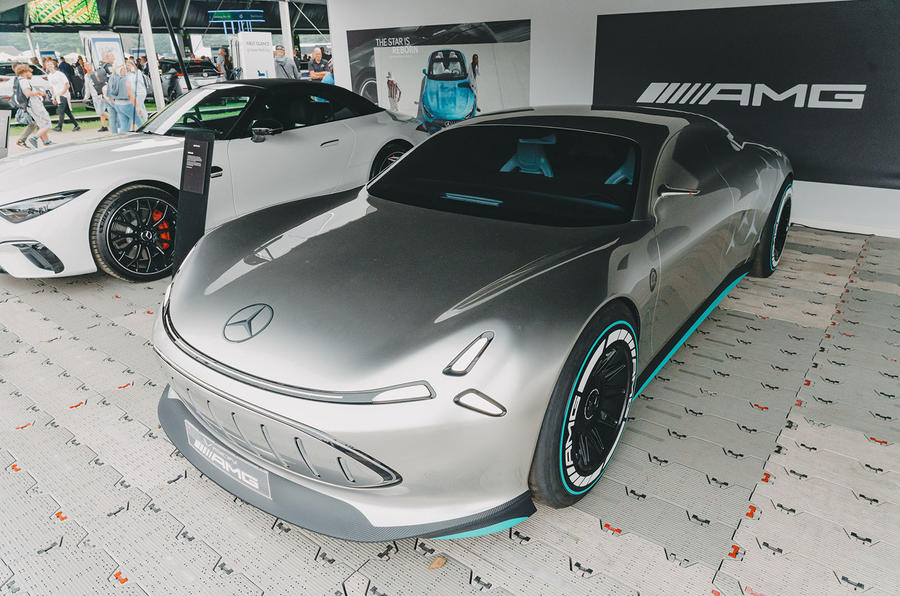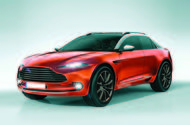Electric SUV – likely based on DBX – and a new halo model will be among Aston’s first EVs
Aston will launch its first EV in 2025 and new partnerships open up several possibilities for its architecture
Aston Martin is weighing up potential ties with Lucid, Rimac and Mercedes-Benz architecture for its first electric sports car, due in 2025.
The firm has today announced a huge, £653 million investment plan aimed at paying back debts, ramping up production volumes and boosting profits – but the package will also be instrumental in the fruition of Aston’s electrification strategy.
The Gaydon firm’s first plug-in hybrid – expected to be based on the Aston Martin DBX SUV – will be launched in 2024, before a pure-electric model arrives in 2025 on the way to a “fully electrified GT/sport and SUV portfolio” in 2030.
Both an electric sports car and SUV have previously been mooted for a 2025 launch, with executive chairman Lawrence Stroll saying: “We’re literally defining now the products we want to launch with and expect to have an answer early next year.”
Details of the first electric car are unclear, but Stroll conceded that a halo supercar or hypercar car was among those being considered. The firm has previously pledged to build it in Britain and agreed to work with Blyth-based outfit Britishvolt on a new “high-performance” battery that aims to offer “new standards of repeatable on-track performance, charging time and range”.
As a direct shareholder that already has many of its systems integrated into the firm’s cars, Mercedes-Benz offers the most direct route for Aston Martin into electrification. Today, it holds a 9.7% stake in the British firm, to be boosted by a further investment in the autumn.
Aston already uses Mercedes-AMG V8s and Mercedes-based infotainment in its current cars and is considering the prospect of a similar supply arrangement for its electric models.
A natural fit for an Aston Martin EV would be the upcoming AMG.EA architecture that Mercedes’ performance division is currently developing for use in dedicated electric sports cars – as previewed by the radical Vision AMG concept earlier this year, which will evolve into a production car in 2025.

This platform is expected to feature a cell-to-chassis design that integrates the battery pack into the structure itself to lower the centre of gravity, and accommodates motors developed by British firm YASA – based in Oxford, intriguingly just 35 miles from Aston’s Gaydon HQ.
However, Mercedes’ stake in Aston now comes second to that of the Saudi Arabian Public Investment Fund (PIF), which will acquire a 16.7% share of the British firm for £78 million.
The PIF also heavily contributed to a huge £550 million investment package in McLaren earlier this year, and notably in 2019 became the main backer of American EV firm Lucid, with an investment worth more than $1 billion (£840m). Stroll conceded that its involvement, which has been under discussion for “months”, could offer an alternative avenue for Aston’s electrification plans.
Lucid currently has just one car on sale, the Air luxury saloon, and is developing an SUV under the codename Project Gravity, to sit atop the same 900V platform.
The American EV firm does not supply its architecture to any other car makers currently but has previously supplied batteries for the Formula E championship. It builds cars at a new $700m (£590m) facility it calls AMP-1 in Casa Grande, Arizona and plans to significantly ramp up its output with a new facility in Saudi Arabia that’s capable of producing 150,000 cars per year.
Intriguingly, Stroll highlighted Croation hypercar outfit Rimac as a potential partner on a press call following the investment announcement. While he did not elaborate, his confirmation that a halo car is part of the product plan and Rimac’s track record of producing low-volume hypercars raises the prospect of the firms partnering for a low-volume, fast-turnaround project that could be in line with Aston’s 2025 launch plans.
Stroll also highlighted that Aston plans to continue to build up electrification competency within the firm, adding: “Electrification isn’t just about batteries or motors. There’s so much more to it, and as our development investment transitions to electrification, then we plan to build up our own capabilities, too.”
Additional reporting by Jim Holder
Source: Autocar
